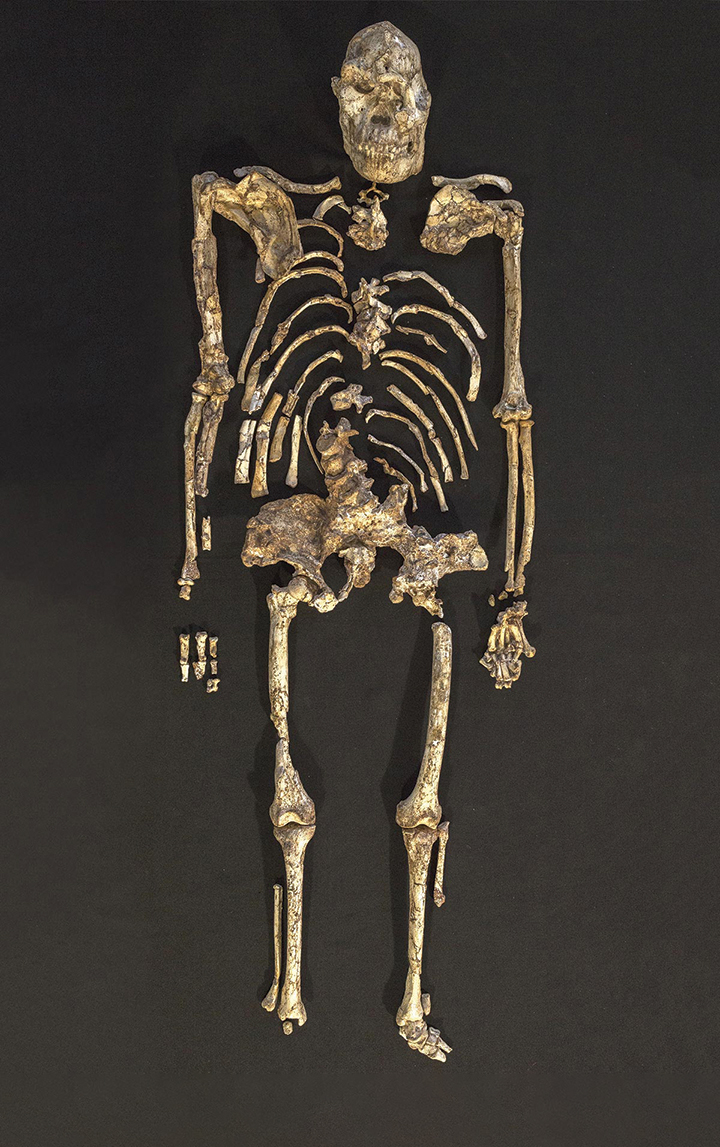Anatomy professor’s analysis of fare fossil’s shoulders suggests we were climbers for far longer than originally thought
When the 3-million-year-old Australopithecus fossil known as Little Foot was discovered buried in rock in a South African cave in 1994, scientists were excited to learn more about human evolution from one of the oldest and most intact set of bones ever discovered.

But the process to excavate Little Foot — named for the four ankle bones that told scientists she walked upright — was painstaking, taking over 15 years to perform without damaging or compromising the find.
When more recently a team from the University of Southern California’s Keck School of Medicine began to analyze the hominid’s upper body, they brought in an expert on paleoanthropology and the evolution of human shoulder blades in Dr. David Green, associate professor of anatomy for the Jerry M. Wallace School of Osteopathic Medicine.
Green’s analysis helped the team determine Little Foot had shoulder blades attached to thick muscles more similar to modern gorillas than today’s humans. The bones offer clues that climbing was vital for early hominids — suggesting that structural similarities between humans and apes persisted until far more recently than originally believed.
“When I look at a shoulder blade, I can tell if it looks like a human or an ape by looking at the angle of the joint,” Green says. “Our’s point out to the side — that’s how we hold our arms. We don’t often reach up, because we’re not built for that. Apes’ joints point up; they’re larger muscularly in their upper extremities. What I noticed immediately [about Little Foot] was the joint facing up. And the shape of the shoulder blade … was more like a gorilla’s. It’s not what we expected — this was about 7 million years from when the presumed split between modern humans and chimps was.”

Green hesitates to use the words “Missing Link” to describe Little Foot, though the evidence is strong that she walked upright and was capable of swinging from and climbing trees. But he says the discovery is important in understanding human evolution.
“What we’ve found with Little Foot — and this is in line with other work I’ve done — is that our last common ancestor may have been more gorilla-like in overall shape,” he says. Green’s excitement for the find is understandable. Little Foot represents an incredible find in a field that he’s dedicated his professional life to.
A graduate in biological anthropology and anatomy from Duke, Green earned his Ph.D. in hominid paleobiology from George Washington University. In his studies of evolution and comparative anatomy of humans and apes, he has compiled an extensive developmental comparative morphometric dataset from more than 1,200 shoulder blades collected from various museums throughout the world.
Before Little Foot, Green studied several Australopithecus fossils, including the famous Lucy fossil discovered in the 1970s.
What made Little Foot special — aside from what it revealed — was just how well it was preserved over 3.6 million years.
“It’s striking how complete she was,” he says. “The shoulder blade is a very thin bone, and it’s very rare to be preserved in a fossil record. Time does everything it can to destroy organic matter. When time progresses and sediments turn to stone, there’s a tendency to warp and crush the bones. Little Foot probably fell down this cave shaft, and we were lucky no predators came to scavenger. She was buried and fossilized, and her completeness was remarkable.”

